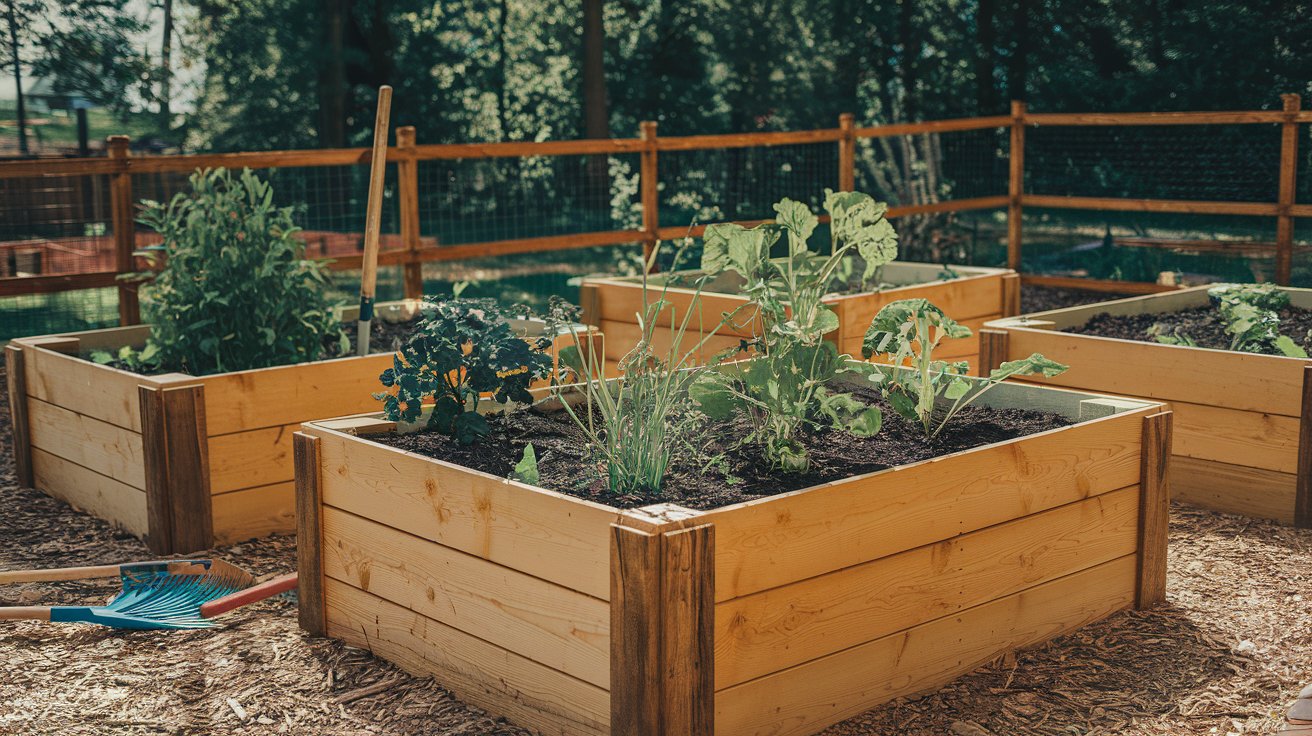If you’re looking to take your gardening to the next level, raised garden beds are an excellent option. They offer a controlled environment, help improve soil quality, and can even make gardening more accessible if you build them at a higher height. In this complete guide, we’ll walk through everything you need to know about raised garden beds, from DIY ideas to choosing the best materials, so you can grow a thriving garden no matter where you live.
Table of Contents
What is a Raised Garden Bed?
A raised garden bed is a gardening structure where the soil is elevated above the ground, typically framed by wood, metal, or other materials. These beds provide a controlled environment for your plants, making it easier to manage soil quality, drainage, and pests. Raised beds can range in height from a few inches to several feet, allowing for flexibility based on your gardening needs.
Why Raised Garden Beds Are Ideal for Your Garden
- Better Soil Quality: When you create a raised bed, you control the soil content, ensuring it’s nutrient-rich and well-draining.
- Improved Drainage: Raised beds prevent water from pooling around your plants, reducing the risk of root rot.
- Reduced Weeds: Weeds are less likely to infiltrate a raised bed, especially if you place a weed barrier at the base.
- Accessibility: Raised garden beds with legs or elevated beds can make gardening easier for people with physical limitations.
- Pest Control: Many pests are ground-dwellers; a raised bed can be a deterrent, keeping your plants safer.
- Versatility: They can be placed almost anywhere—on patios, balconies, or directly on your lawn.
DIY Raised Garden Bed Ideas
If you’re interested in creating your own raised garden bed, here are a few ideas:
- Simple Wooden Box: The classic design, a wooden box, is easy to build, versatile, and budget-friendly.
- Raised Garden Bed with Legs: Perfect for those who want a waist-height garden, making it easier to maintain.
- Steel Raised Beds: Durable and weather-resistant, steel raised beds are modern and functional.
- Stacked Stone Beds: For a more permanent, aesthetic option, you can create a raised garden bed from stacked stone.
Materials for Your Raised Bed
Choosing the right material for your raised bed is crucial for its longevity and effectiveness. Some popular choices include:
- Wood: Cedar and redwood are naturally rot-resistant and ideal for garden beds. Avoid pressure-treated wood as it can leach chemicals into the soil.
- Metal: Steel raised beds are trending due to their durability. Galvanized steel, in particular, is resistant to rust and can last for years.
- Stone: Aesthetic and long-lasting, stone can provide excellent insulation for soil, though it’s more costly and labor-intensive.
- Brick or Concrete Blocks: Sturdy and durable, though more permanent than other options.
Where to Buy Raised Garden Bed Kits
If DIY isn’t for you, pre-made raised garden bed kits are widely available. Home improvement stores like Home Depot offer raised garden beds made of wood, metal, and even composite materials. Kits typically include pre-cut materials, making assembly easier.
Planning Your Raised Bed Layout
When planning your raised garden bed, consider these tips:
- Size: Raised garden beds should be wide enough to allow you to reach the center without stepping on the soil, usually 3-4 feet wide. The length can vary based on space, with 6-8 feet being common.
- Height: For most plants, a height of 12-18 inches is ideal. However, if you’re growing deep-rooted vegetables like carrots, you may need a bed at least 24 inches deep.
- Location: Choose a spot that gets at least 6 hours of sunlight daily. More on choosing the ideal location for your raised bed is discussed in a separate article.
Raised Garden Bed Plans and Considerations
Before building your raised garden bed, take time to plan it out. Think about:
- Drainage: Raised beds need good drainage, so be sure to layer the bottom with stones or gravel before adding soil.
- Soil: Opt for a high-quality garden soil mix. You may want to mix in compost to improve nutrients.
- Irrigation: Consider installing drip irrigation for consistent watering. This ensures plants receive water directly at the roots without wasting water.
Maintenance Tips for Raised Beds
Maintaining a raised garden bed is relatively simple. Here are some quick tips:
- Mulching: Add a layer of organic mulch to retain moisture and suppress weeds.
- Soil Amendments: Each season, amend the soil with compost or organic fertilizer to replenish nutrients.
Crop Rotation: To avoid soil depletion, practice crop rotation, especially if you’re growing vegetables.
